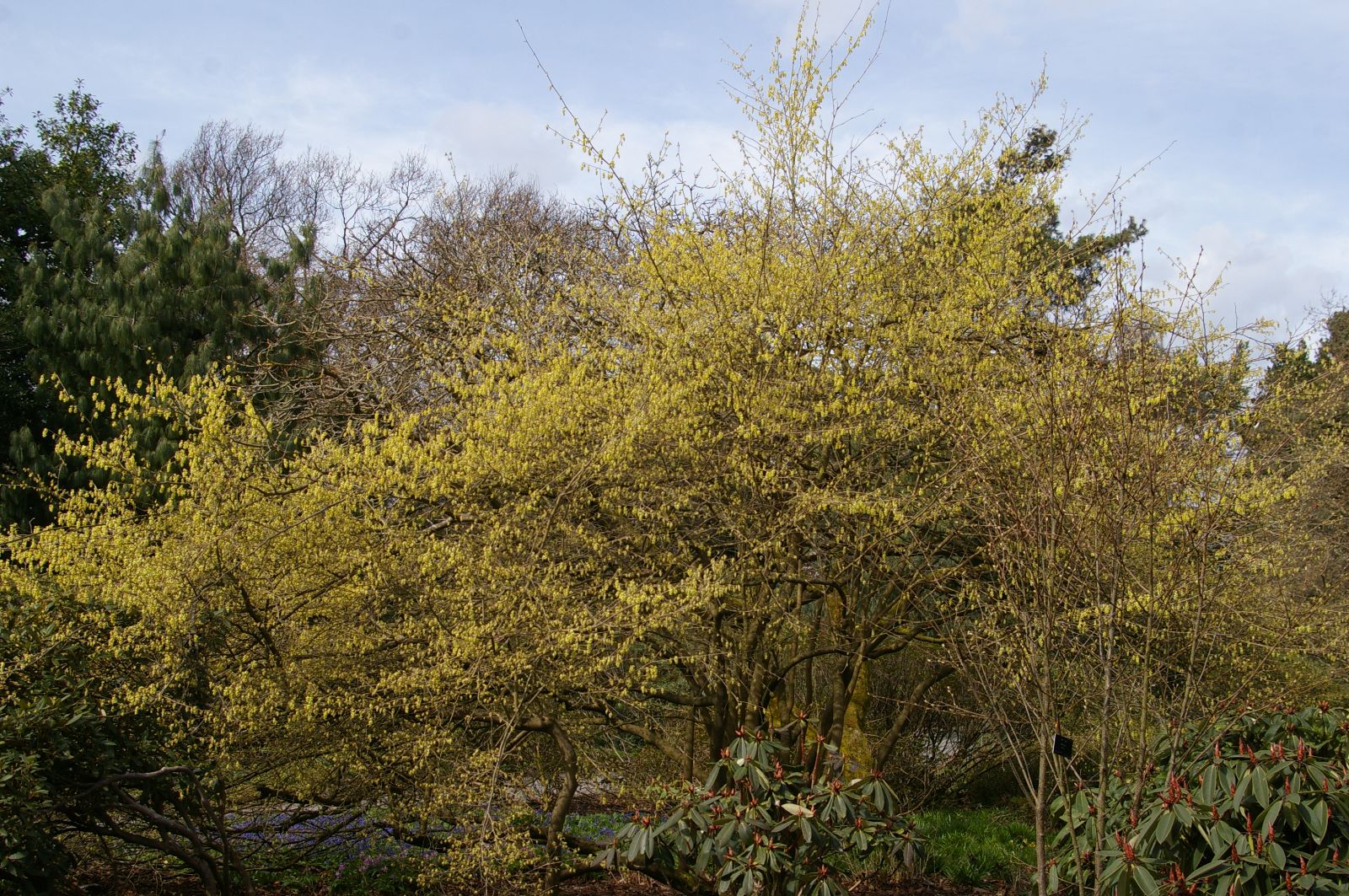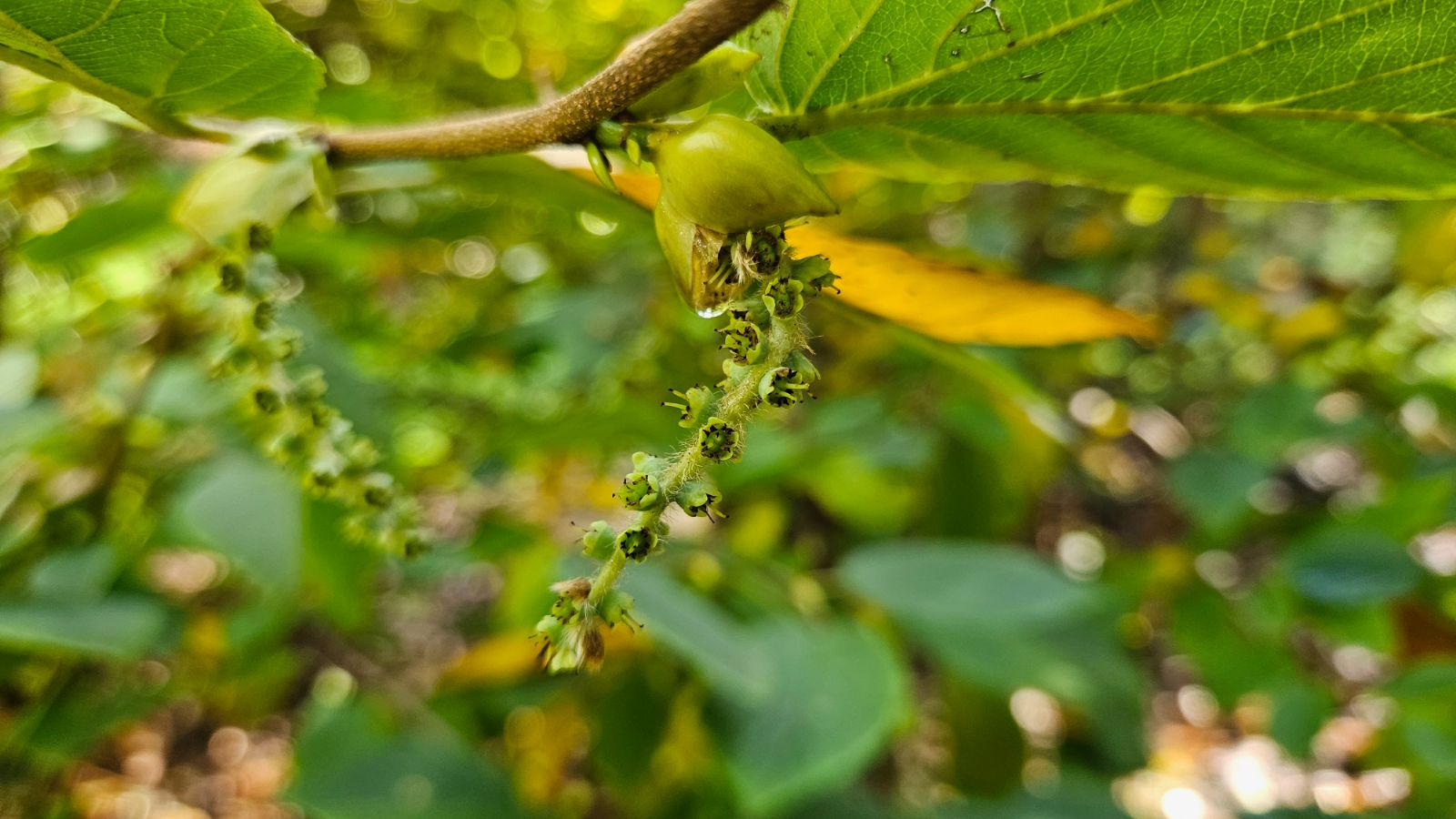Corylopsis sinensis
Credits
Article from Bean's Trees and Shrubs Hardy in the British Isles
Recommended citation
'Corylopsis sinensis' from the website Trees and Shrubs Online (treesandshrubsonline.
Genus
A shrub 10 to 15 ft high in a wild state; young shoots downy and (like the leaf-stalks) more or less glandular. Leaves obovate-oblong, 2 to 31⁄2 in. long, abruptly pointed, heart-shaped at the base, toothed, silky-felted beneath; stalk 1⁄4 to 3⁄4 in. long, very downy. Flowers pale primrose-yellow, fragrant, produced twelve to eighteen together during April in a drooping raceme 11⁄2 to 2 in. long, each flower 1⁄3 in. long; petals orbicular, 1⁄6 in. diameter; anthers yellow; calyx greenish yellow with short rounded lobes; stipular bracts broader than long, concave, silky inside and at the margins, glabrous outside, yellow-green; floral bracts hairy both sides. Fruits globose, 1⁄3 in. diameter, hairy.
Native of Central and W. China; introduced by Wilson for Messrs Veitch about 1901. It appears to be closely allied to C. griffithii, but differs in the basal bracts of the inflorescence being broader and shorter, and in the yellow anthers. C. spicata has differently shaped leaves, much more glaucous, and broadest below the middle. C. sinensis is quite hardy. At Coombe Wood (Kingston-on-Thames) it used to grow vigorously and flowered regularly in April.
From the Supplement (Vol. V)
This species is variable in such characters as the amount of down on the undersides of the leaves and the petioles, and the degree to which the staminodes (nectaries) are divided. But the variations are not great enough nor well enough correlated to justify making five species out of them. In their revision Morley and Chao recognise only one, with one variety in addition to the typical one, and one forma:
var. sinensis C. willmottiae Rehd. & Wils.; C. yunnanensis Diels; C. glandulifera Hemsl.; C. sinensis var. glandulifera (Hemsl.) Rehd. & Wils. – Leaves downy beneath. Inflorescence up to about 31⁄2 in. long. There were three introductions of typical C. sinensis by Wilson: in 1900 for Messrs Veitch from Hupeh (grown as C. sinensis), and in 1908 and 1911 for the Arnold Arboretum (grown mainly as C. willmottiae). The species has been figured twice in the Botanical Magazine, both times as C. willmottiae – Bot. Mag. t.8708 and Bot. Mag., n.s., t.438. It is interesting that the plant at Kew portrayed in the second plate cited had in fact been received from a nursery as C. sinensis but was re-identified by Dr Turrill as C. willmottiae.
var. calvescens Rehd. & Wils. C. platypetala Rehd. & Wils.; C. p. var. levis Rehd. & Wils.; C. glaucescens Hand-Mazz.; C. hypoglauca Cheng. – Leaves glabrous beneath, or downy only on the veins. Inflorescences usually no more than 2 in. long. This is represented in cultivation by plants grown as C. platypetala (see page 719).
f. veitchiana (Bean) Morley & Chao C. veitchiana Bean – Leaves quite glabrous beneath. Anthers brownish red. This was originally described by W. J. Bean in 1910 as a distinct species (see page 720).
C. sinensis ‘Spring Purple’ has plum-purple young growths. Selected by Messrs Hillier it was named by them in 1969, as a cultivar of C. willmottiae.





